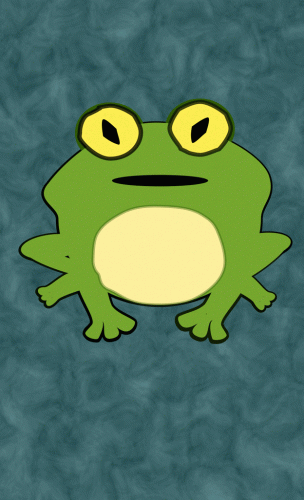
This week I wanted to make a 3d zoetrope in Unity to show an animation as a starting point for exploring virtual reality experience design for viewing at different angles. My starting point was a favourite childhood story of Tiddalick The Frog, a tale for a country that cycles through droughts and flooding rains. After living through the Brisbane floods of 1974 and 2011, I have seen the powerful landscape changing forces of too much and too little water.
I made a quick animation of Tiddalick in after effects, taking inspiration from Red Pixel's beautiful storytelling. This was a 1920x1080 vertical aspect sequence of 240 png image files.
Unity iterations v02 from mazinbriz on Vimeo.
In unity for my first iteration, I created a rectangle 720 wide, 1280 high game object with a script that rotated it around the origin with the speed as a public parameter that can be changed in the user interface. For iteration 2 I created six rectangles that should rotate around the origin, although in fact only two of the rectangles were rotating. For iteration 3, the six rectangles rotated around the origin but facing the wrong way. This meant that for iteration 4 it started to look like a zoetrope, with 240 rectangles rotating and facing the origin. Woohoo! This is where it all went wrong, I could 'place' the png image files onto the rectangles as I hoped, most likely due to a lack of knowledge of how these UI elements work with the game objects. When I hit and overshot the limit of my timeboxed 'making' activity I was left with a rotating 3d zoetrope without any images, just blank grey rectangles.
My goal was to create an experience that captivates and encourages discovery of different viewpoints, based on Costello's 13 categories of play experience (Costello, 2009). In 2009, ACMI showed a 3d zoetrope, showing how a 3d zoetrope could be constructed to be viewed from the outside in. My hope was to take advantage of the features of a VR experience to construct a 3d zoetrope made of multiple layers, to be viewed from the inside out. On reflection, the initial stage of creating an animation was a useful exploration of how frames can be constructed with timing, dimensions and framecount, that would work with the zoetrope format, but I could have got futher towards my goal if I'd used a generative approach to create an animation using my stronger skills in scripting. This was an illustration of Epstein's trouble with too much grit (2019, Epstein). In my past subjects I've kept working at an approach that wasn't a good fit for my capabilities ... or for the design of Unity ... just as suggested by Maria Konnikova, the longer I worked at things, the more I persisted, insisting it would work. This exercise and subsequent reflection on my process has given me a new focus to converse with the technology I'm using and to be present to my creations not as a stage on the way to a fixed goal, rather as an exploration (Moore, 2016).
References:
Costello, B 2009, Play and the Experience of Interactive Art, University of Technology, Sydney Creativity and Cognition Studios (CCS).
Epstein, DJa 2019, Range : why generalists triumph in a specialized world, Riverhead Books, New York.
Moore, G 2016, Responding to the Call of Things: A Conversational Approach to 3d Animation Software, RMIT University.
About This Work
By Amanda Belton
Email Amanda Belton
Published On: 16/09/2020
